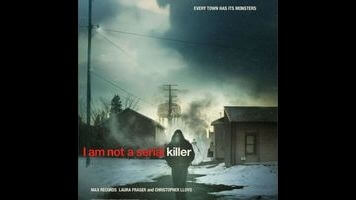Five minutes of channel flipping or searching Google will confirm the public fascination with psychopaths and serial killers. We’re intrigued by the idea of monsters hiding in plain sight, people whose lack of innately human characteristics like empathy and shame enables them to actually do the things that most of us only think about in our darkest moments, if at all. As a result, the psycho killer is a common fixture in films and on TV, where they’re portrayed as either evil geniuses or slaves to their compulsions—think Hannibal Lecter and Buffalo Bill in Silence Of The Lambs. But what about the real people who have been diagnosed with this disorder? Is there such a thing as an innocent psychopath?
John’s classmates bully him and his teachers fear him because he’s overwhelmingly drawn toward death and dead bodies, a personality trait shaped by the fact that his overworked mom April (Laura Fraser) owns a funeral home. John’s school reports on famous murderers and unauthorized forays into the embalming room have gotten him a therapist, Dr. Neblin (Karl Geary), who tells April that her son displays all the signs of a budding serial killer. But although he acknowledges that he doesn’t understand the concept of love and has trouble telling right from wrong, John doesn’t really want to hurt anyone. As a result, he’s established a system of personal rituals and self-checks to quell his homicidal tendencies. (His deadpan recitation of these rituals to a classmate who pushes him a little too far at a school dance provides one of the film’s most memorable scenes.)
Still, John is who he is, and when a series of murders in his normally sleepy hometown suggest the work of a serial killer, he can’t help but investigate. Over the course of the next few weeks, John’s obsessive sleuthing leads him to suspect that his elderly neighbor Mr. Crowley (Christopher Lloyd) is neither as kindly nor as feeble as he appears to be. So he begins spending more time at the Crowleys’ house under the pretense of helping out, all the while trying to get close enough to the old man to find out his secret. A name actor like Christopher Lloyd was undoubtedly a get for a little movie like this one, and Lloyd takes advantage of the opportunity to play against type in a complex, but still terrifying, villain role. (This movie might ruin a few Back To The Future diehards’ childhoods.) Records, at only 18 years old, also turns in a thoughtfully restrained performance, and the two actors play off of one another well.
What sets I Am Not A Serial Killer apart from other takes on this “killers hunting killers” concept (Dexter, anyone?) is its naturalistic, character-based approach. Over the course of an hour and 44 minutes, we come to understand and sympathize with John, who, deep down, isn’t a bad kid. He’s just grappling with an unusual disorder. In this respect, it invites comparison to George Romero’s 1977 film Martin, which also used a small Midwestern town as the backdrop for a character study of a young man wrestling with his darkest urges (in Martin’s case, the urge to drink blood). The two films also parallel each other visually; O’Brien captures the snow-covered streets and shabby wood-paneled rooms of John’s blue-collar world (the film was shot entirely on location) on grainy 16mm celluloid, giving I Am Not A Serial Killer a ’70s look even though it takes place in the present day.
But a uniquely wry tone sets the film apart. I Am Not A Serial Killer is unmistakably a drama, but it’s a strangely cheerful one given its dark subject matter. The menacing and the absurd co-exist in a very funny, very matter-of-fact way: In one scene, April and John are in the car, having a frank discussion about whether John is going to kill Dr. Nevlin. Sinister, right? But then we pan back to see the psychiatrist sitting right there in the back seat, and it’s hard not to laugh. But the darkness is tempered with sensitivity, too. Although Lloyd is physically intimidating in this film in a way we’ve rarely seen from him, his performance also brings an acute awareness of the character’s—and, by extension, the actor’s—mortality, particularly in a painfully vulnerable bathtub scene.
All of this subtlety, while refreshing, can also slow down the pace, although O’Brien tries to keep the audience engaged with humorous observations sprinkled throughout. And the full picture of what’s actually going on doesn’t become clear until the very end. So a bit of patience is required on the viewer’s part, making it unlikely that I Am Not A Serial Killer will become a breakout hit. But it might end up being a cult favorite. Other movies have engaged in the theme of unspeakable evil lurking just under the surface of an all-American town, lifting up a rock to reveal the insects crawling underneath. This movie sees things from the insect’s point of view.

